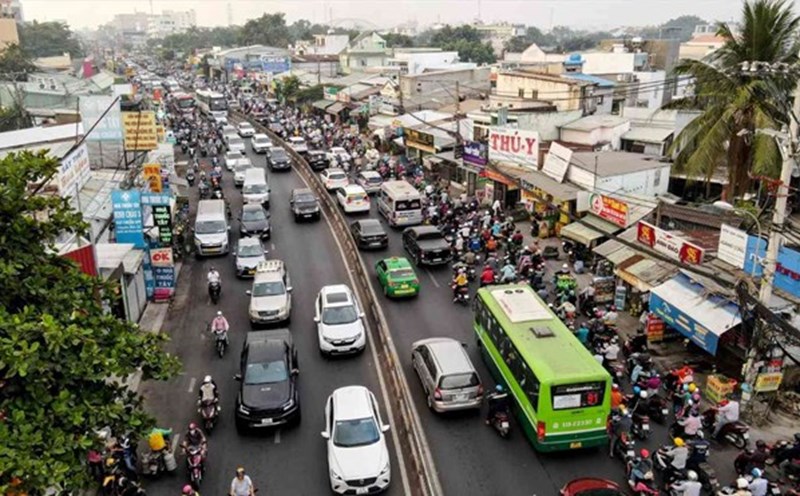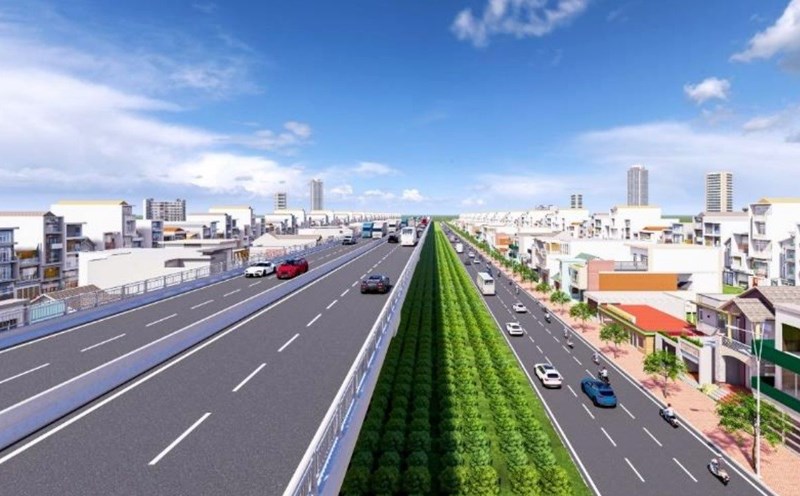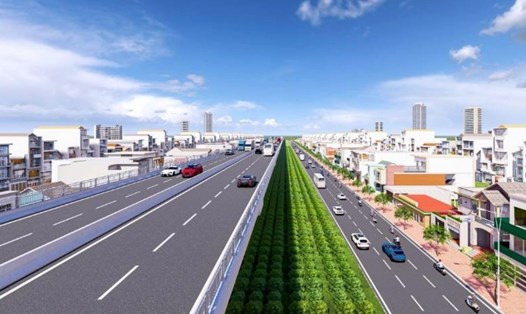The Ho Chi Minh City People's Committee has just submitted to the Ho Chi Minh City People's Council the project to build Binh Tien bridge and road (from Pham Van Chi street to Nguyen Van Linh street). The project will be considered and approved at the 22nd session of the Ho Chi Minh City People's Council held on the morning of April 18.
The Binh Tien Bridge and Road Project is one of the 5 projects initially proposed by Ho Chi Minh City to be implemented under the BOT (build - operate - transfer) form, thanks to the special mechanism of Resolution 98.
However, unlike the remaining projects such as National Highway 1, National Highway 13, National Highway 22 and the North-South axis road approved by the Ho Chi Minh City People's Council, this project is proposed to use state budget capital instead of BOT.
The total investment of the Binh Tien bridge and road project is nearly 6,300 billion VND, of which compensation, support and resettlement costs account for more than 2,878 billion VND; construction, installation and equipment procurement costs are about 2,264 billion VND; the rest is project management, consulting and reserve costs.
According to the plan, the project will begin surveying and preparing a feasibility study report in the second and third quarters of 2025. Compensation and resettlement work will take place from the third quarter of 2025 to the third quarter of 2026. The project will start construction in early 2026 and be completed in the third quarter of 2027.

The 3.66 km long Binh Tien road bridge will be built entirely on high ground as a overpass, with a road surface of 30 m - 40 m wide, accommodating 4 to 6 lanes.
The route starts from the Binh Tien - Pham Van Chi intersection (District 6), crosses Vo Van Kiet Avenue, Tau Hu Canal, Cay Sung Street (District 8), Doi Canal, Ta Quang Buu Street, and ends at Nguyen Van Linh Avenue (Binh Chanh District).
In addition to the main route, the project also has branches connecting to important roads such as Vo Van Kiet, Binh Dong, Hoai Thanh, Ta Quang Buu and Nguyen Van Linh streets.

Currently, traffic connecting the central area of Ho Chi Minh City (District 1, 5, 6) with the southern area (District 7, 8, Binh Chanh District, Nha Be) mainly relies on a number of axes such as Nguyen Huu Tho Street (Khenh Te Bridge), Duong Ba Trac (Nguyen Van Cu Bridge, Chu Y Bridge), Pham Hung (Nguyen Tri Phuong Bridge) and National Highway 50 (Nhi Thien Duong Bridge). These routes are all overloaded, often congested during rush hour.
It is forecasted that when the Ben Luc - Long Thanh expressway is put into operation in 2026, traffic demand in the southern area of the city will increase sharply, especially on National Highway 50. Therefore, the early formation of a new route such as Binh Tien Bridge and Road is a timely and necessary solution.
As an important traffic axis, Binh Tien Bridge and Road will not only help reduce traffic pressure but also effectively connect the center of Ho Chi Minh City with large urban areas such as South Saigon, Hiep Phuoc and the Ring Road 2, Ring Road 3 and Ring Road 4 systems in the future.











